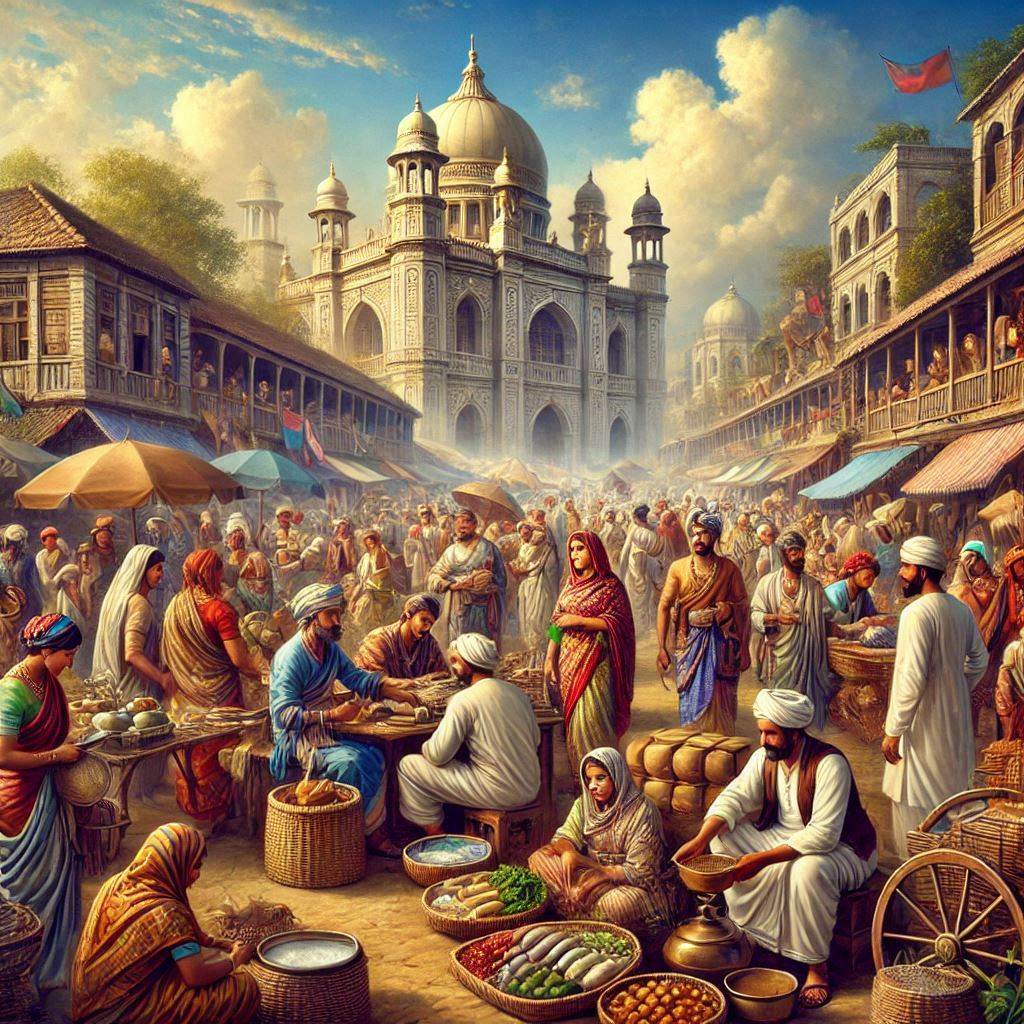
Introduction.
The Colonial Period in Bengal signifies a critical chapter in the region’s history, marked by profound socio-economic changes and extensive exploitation. European traders began arriving in the late 15th century, with the Portuguese, Dutch, and British leading the way. Among these, the British emerged as the dominant force. The British East India Company’s triumph at the Battle of Plassey in 1757 signaled the start of British colonial rule. The establishment of the Bengal Presidency under British control introduced Western education, modern infrastructure, and new administrative systems, albeit at the cost of severe exploitation, frequent famines, and economic inequality. Amid this backdrop, the 19th-century Bengal Renaissance emerged, advocating for social and religious reforms. Visionary leaders like Raja Ram Mohan Roy and Ishwar Chandra Vidyasagar promoted education, women’s rights, and rationalism, leaving a lasting impact on Bengali society.
Arrival of European Traders.
In the late 15th century, European traders began to establish their presence in Bengal. The Portuguese were the first, followed by the Dutch, French, and British. Each sought control over Bengal’s lucrative trade in textiles, spices, and other goods. Over time, the British East India Company became the dominant trading entity, leveraging its military and political influence to extend its reach.
The Battle of Plassey and British Rule.
A decisive moment in Bengal’s colonial history was the Battle of Plassey in 1757. British East India Company forces, led by Robert Clive, defeated the Nawab of Bengal, Siraj-ud-Daulah, securing British control over Bengal. This victory paved the way for establishing the Bengal Presidency, a key administrative unit of British India. The British introduced Western education, built modern infrastructure such as railways and telegraph lines, and implemented new administrative systems. These changes contributed to Bengal’s modernization but also entrenched colonial exploitation, leading to widespread famines and economic disparities.
The Bengal Renaissance.
The challenges posed by British rule catalyzed the 19th-century Bengal Renaissance, a cultural and intellectual movement aimed at revitalizing Bengali society. This period saw a resurgence of interest in literature, arts, and sciences, coupled with a strong emphasis on social and religious reforms. Visionary leaders like Raja Ram Mohan Roy and Ishwar Chandra Vidyasagar played pivotal roles in this movement. Roy advocated for abolishing practices like sati (the immolation of widows) and promoted modern education, while Vidyasagar championed women’s rights and worked toward uplifting marginalized communities.
Impact of Colonial Rule.
British colonial rule’s impact on Bengal was multifaceted. On one hand, introducing Western education and infrastructure laid the groundwork for modernization and economic development. On the other, exploiting Bengal’s resources and implementing oppressive policies led to severe economic hardships and frequent famines. The Great Bengal Famine of 1943, which claimed millions of lives, starkly reminds the devastating consequences of colonial exploitation.
Legacy of the Colonial Period.
The legacy of the Colonial Period in Bengal is complex and multifaceted. While the period brought significant advancements in education, infrastructure, and administrative systems, it also left a legacy of exploitation, economic inequality, and social upheaval. The Bengal Renaissance, with its emphasis on social and religious reforms, played a crucial role in shaping modern Bengali identity and society. The contributions of leaders like Raja Ram Mohan Roy and Ishwar Chandra Vidyasagar continue to inspire generations, underscoring the enduring impact of this transformative period.
Summary.
The Colonial Period in Bengal, marked by the arrival of European traders and the establishment of British rule, brought profound changes to the region’s socio-economic fabric. The British East India Company’s victory at the Battle of Plassey in 1757 signaled the beginning of a new era characterized by modernization and exploitation. The Bengal Renaissance emerged as a powerful response to colonial rule, advocating for social and religious reforms and leaving a lasting legacy on Bengali society. The impact of the Colonial Period is a testament to the resilience and adaptability of the Bengali people, who navigated the challenges of colonialism to forge a path toward progress and development.






